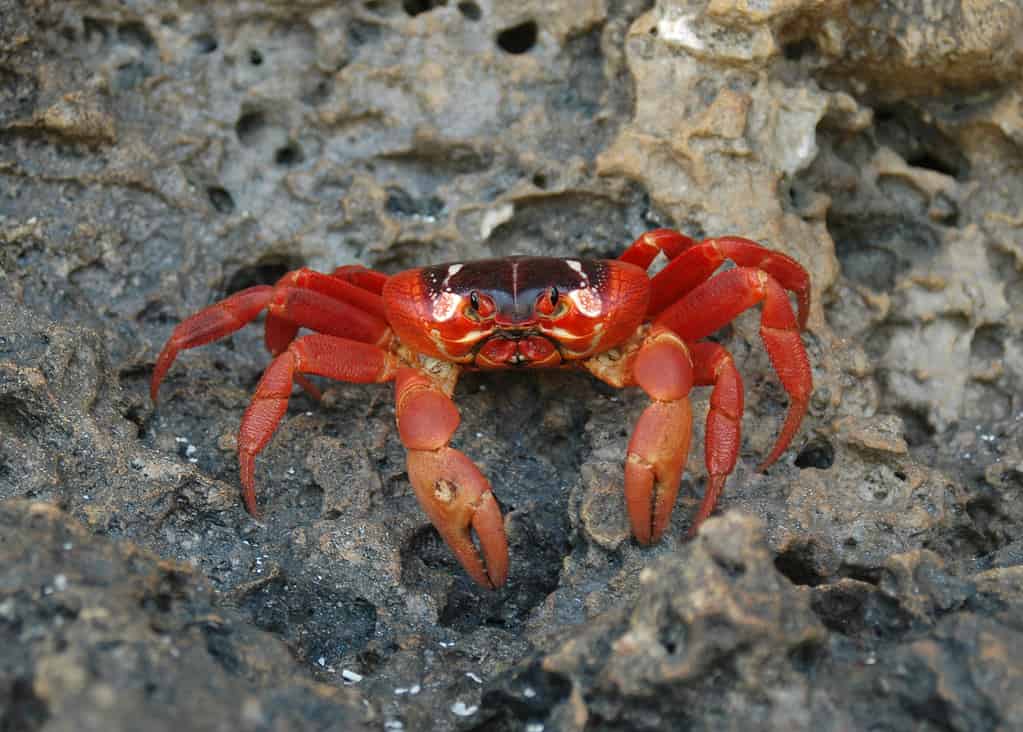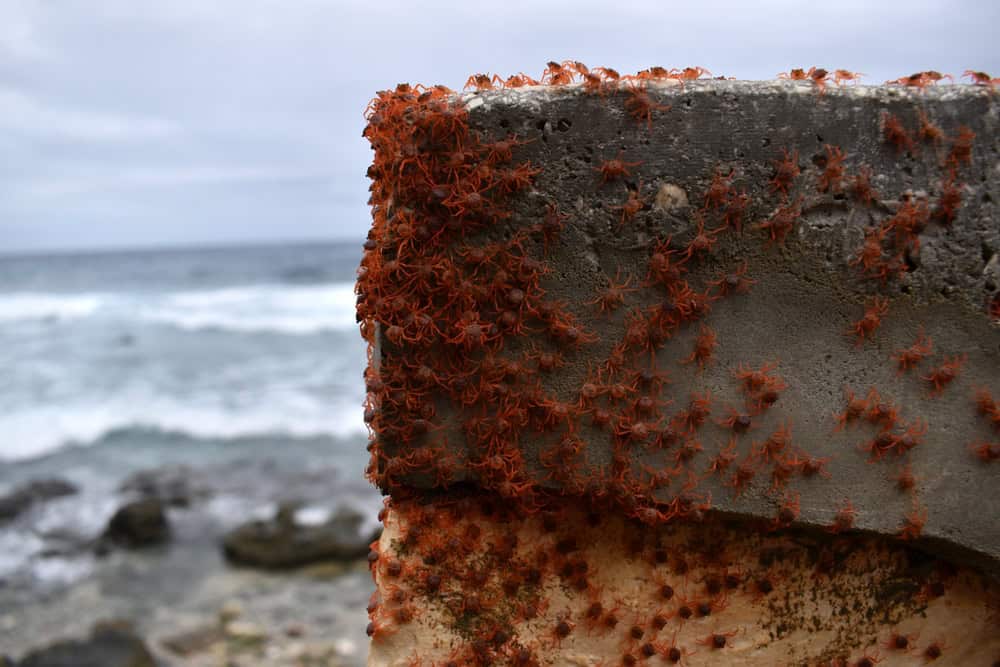
The post The Annual Crab Migration That Stops Traffic on Christmas Island appeared first on A-Z Animals.
Visit Christmas Island this fall to see one of the most incredible natural animal encounters of your life: the annual crab migration. An estimated 40 to 50 million red crabs travel across the island each year, transforming the sandy beaches into a moving red swarm that stops traffic — and utterly delights tourists.
Where Is Christmas Island?
Located in the Indian Ocean, Christmas Island is an Australian territory. The majority of the island is a national park, which houses rainforests, wetlands, coral reefs, and a huge number of endemic species, according to Christmas Island National Park’s official website.

Christmas Island is a small territory of Australia located in the Indian Ocean.
©Zinni-Online/iStock via Getty Images
Although traveling to this remote island can be costly (it’s about 500 km south of Jakarta, the capital of Indonesia), entry to Christmas Island National Park is free for visitors. You can go bushwalking in the rainforest or birdwatching to try to spot one of the rare Christmas Island hawk-owls. However, the most popular attraction is the annual crab migration.
What Is the Annual Crab Migration?
Most of the crabs on Christmas Island (Gecarcoidea natalis) live in the rainforest, but once a year, they leave their homes and cross roads, streams, rocks, and beaches to get to the ocean to reproduce. This happens at the first rainfall of the wet season, which usually happens in October or November, but can be as late as December or January.
During the migration, male red crabs take the lead, joined by females. Red crabs will always spawn before dawn on a receding high tide during the last quarter of the moon. With this in mind, the crabs wait until the first rainfall to begin their trek, either moving quickly to arrive in time or taking their time to eat and drink along the way, depending on the timing of the moon.

Male crabs will migrate first, followed by female crabs.
©Sofia Varano/Shutterstock.com
When the crabs reach the sea, they rehydrate before digging burrows in the lower terraces of the island. During this period, male crabs can become territorial and may fight each other for space. Later, females join them to mate. After mating, the males return to the forest, leaving the females behind to lay and care for their eggs until they develop. Each female crab can produce up to 100,000 eggs at a time! Following the lunar cycle, female crabs leave their burrows when the moon reaches its last quarter. They carry their eggs in a brood pouch and wait near the shoreline. As the high tide begins to recede before dawn, the females release their eggs into the sea and then return home.
See Baby Crabs
Now for the fun part: seeing baby crabs in the wild! The red crab larvae will hatch from their eggs when their mother releases them into the sea. They will grow and develop over a month, eventually emerging after they have become fully formed baby crabs. However, many of them are eaten by fish, manta rays, or whale sharks before they can reach land. These baby crabs are a favorite food for several ocean predators! If any survive, you can try to find the adorably tiny creatures (about 5mm across) marching from the sea to the forest. It can take about nine days to reach the plateau, giving you plenty of opportunities to spot them.
Traffic-Stopping Crabs

Christmas Island National Park will erect bridges for people to walk and observe the crab migration.
©TravellingFatman/Shutterstock.com
Because so many tourists visit Christmas Island during the migration, the island shuts down certain roads. “To protect our red crabs, some sections of roads may close for part or all of the day during the peak migration time, often at short notice,” stated the Christmas Island National Park’s website. “But you can park your car and carefully walk among the sea of moving crabs as they make their way to and from the beach.”
Crabs’ hard shells can also puncture car tires, which is another reason it’s not safe to drive during this time. To accommodate tourists, the island erects temporary crab bridges over roads, allowing visitors to stand and watch the crabs safely. Local signs and radio stations provide updates, helping you find the best places to watch the migration.
Last year, junior ranger program leader Lin Gaff told a local news station, “[The red crabs are] across the island and going to all sides and nooks and crannies of it,” she said.
“It is actually quite weird to have crustaceans running around in your school oval and running into your patio and across your living room floor,” Gaff continued. “Even sometimes coming up the toilet drain.”
Because not all roads can be closed, Gaff said that sometimes crabs have to be raked away. “There are certain areas where the road is very narrow and the only way that you could get a car through without crushing crabs is to move the crabs out of the way, and the best way we found to do that is with the garden rake,” she told the outlet. “It’s kind of like a part in the Red Sea.” Amazing!
There’s nothing quite like witnessing the red tide of crabs as they move across Christmas Island, so if you have the chance to see it, don’t miss it! This is one of the most unique natural animal encounters in the world — not only is it mesmerizing to witness, but it’s also incredible that these crabs instinctively know the right time to move based on the lunar cycle.
The post The Annual Crab Migration That Stops Traffic on Christmas Island appeared first on A-Z Animals.
September 11, 2025 at 05:02PMSydni Ellis
.jpeg)
.jpeg)

0 Comments